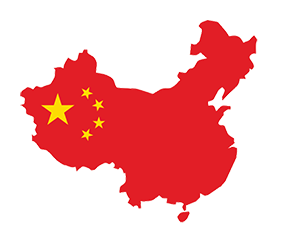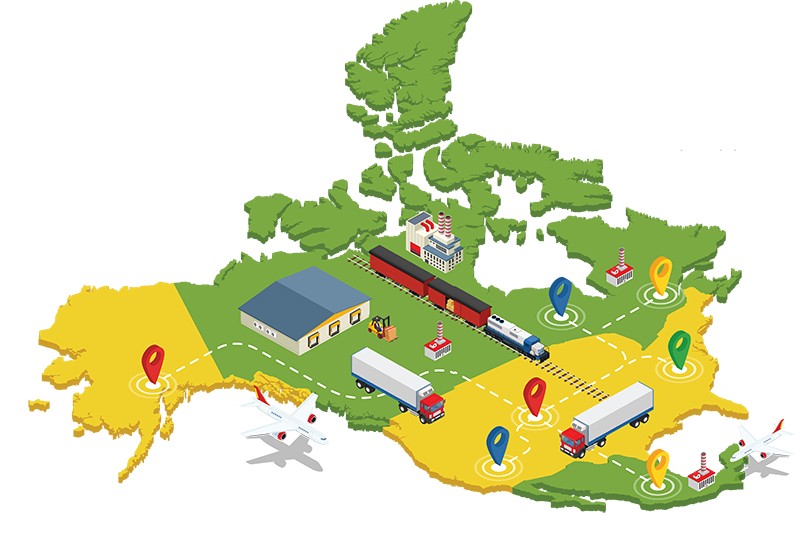Trade Update: Time to shorten the supply chain
To better deal with growing protectionism and the need for higher agility, logistics managers must incorporate regional designs into their global networks without diluting the cost or competitive advantages of existing relationships.
Because international trade has become less “globalized” compared to a few years ago, logistics managers must devote more scrutiny to regulatory compliance and unexpected penalties.
This is the conclusion drawn from speaking with a number of industry analysts who note that global trade has tripled in the 21st century, from $7 trillion to $21 trillion—along with the complexity of logistical international networks.
“Many industries have become capacity-constrained,” says Kamala Raman, vice president and analyst with the Gartner supply chain practice. “Some of this is driven by availability of material, some is driven by labor shortages in both manufacturing and transportation, and some of it is driven by changing quarantine conditions around the globe as well as the general inability of countries around the world to operate at a pre-pandemic normal.”
Michael Gravier, associate professor of marketing and supply chain management at Bryant University, notes that the biggest impact of this new reality will be the shortening of many supply chains.
The pandemic drove home the importance of shorter, more responsive supply chains to respond to dynamic environments—yet, the pandemic was simply the final lesson in a series of disruptions, says Gravier. “Tariff wars, natural disasters, technological disruptions, changing international alliances, new international trading blocs, redefinitions of NAFTA, and substantial demographic shifts all preceded COVID-19.”
According to Gravier, we live in an age of ever-shortening planning horizons now that we’re coming out of an era where competitive advantage accrued to those who leveraged the production efficiencies inherent in the specialization found in a globalized world. “We’re discovering the importance of efficiencies in the relationships that bind our supply chains together,” he says. “The traditional elongated, global supply chain is its own worst enemy. It’s too slow to react to the needs of customers, which means more margins that must be covered by the landed cost at the end.”
Gravier maintains that the problem of multiple margins has, until fairly recently, been minimized by cheap transportation costs, cheap and stable sources of energy, and a relatively low regime of tariffs. Furthermore, in the past, managers faced comparatively low labor costs abroad, a strong dollar, low inflation, and a stable consumer marketplace.
“Some of these factors were destined not to last, and others are not as beneficial as they were in the past—and many of them have increased the costs for everyone in the supply chain,” says Gravier. “Disintermediation and simplification of globally-sprawling supply chains are the fastest ways to bring landed costs under control, with the added benefit of increasing agility and responsiveness and making supply chains a lot easier to manage.”
Other analysts note that in strategic industries, such as the semiconductor or high-capacity battery sector, organizations can’t make decisions based on cost alone. They’re also restricted by national security concerns or simply an impossibly high demand for innovation. In these cases, public-private partnership is often key.
For example, the European Commission has approved a $3.5 billion fund to foster the development of batteries for electrical vehicles in 12 European countries. This public funding is expected to draw a further $11 billion from the private sector.
In the meantime, Taiwanese entrepreneurs have also drawn upon their government’s substantial R&D support to become a chip-making powerhouse, while the CHIPS for America Act will provide $52 billion in federal investments to strengthen domestic semiconductor research, design and manufacturing.
The China factor

For decades, China has demonstrated incredible growth fueled in part by its cheap and massive labor pool as well as a looser regulatory regime when it comes to safety and the environment. Most importantly, China demonstrated incredible growth in its debt.
“China might bluster about the superiority of its authoritarian form of capitalism, yet the evidence suggests deep fissures in China’s current economic model,” says Michael Gravier, associate professor of marketing and supply chain management at Bryant University.
The data is clear that China has liberalized somewhat over the past 10 years, even under President Xi’s leadership—and that the oft-touted benefits of the authoritarian economic model have, in fact, developed with this increased economic liberalization.
Unfortunately, says Gravier, China keeps backtracking on its opening-up experiments and is moving too slowly. Ultimately, China depends heavily on global trade and can’t develop by looking inward—a lesson grounded in current data which manifests in its history.
“China’s economy and supply chains may flounder for a bit longer, but over the next year or two the country will be forced to open up its economy more in order to nurture the benefits it sorely needs from an innovative and more open system,” observes Gravier.
The reason is simple: China relied heavily on debt-fueled growth in the past, but Evergrande is just the tip of the iceberg when it comes to China’s debt-bomb. China’s private company debt is among the highest in the world, and its municipal and local government debt was driven by risky investments.
These debts and the meddling in markets by the Communist Party have depressed growth and driven away capital, and they may yet precipitate a currency crisis, meaning a devaluation of Chinese currency. According to Gravier, that would rock world markets and deepen the “cold war” with the United States and its allies.
Gravier concludes by noting that avoiding a currency crisis requires strong economic growth. The strong expansion that China requires to prevent economic chaos and internal instability can’t occur until China modernizes and opens its economy, and the Communist Party will soon have to decide between furthering such reforms itself or dealing with the consequences of trillions of dollars of debt that it will no longer be able to service.
“Ultimately, China’s policies have been holding back its growth, and my prediction is that China will make the decision to liberalize key sectors of the economy,” adds Gravier. “If that happens, expect growth to be explosive in relatively short order.”
“Countries are all tightly integrated when it comes to the goods we’re used to having around,” says Gartner’s Raman. “Consider the dozens of suppliers around the globe in the COVID-19 vaccine supply chains that are saving billions of lives today.”
For example, for the Pfizer/BioNTech vaccine, there are 280 components from 25 different suppliers involved, spanning 19 countries. “Chief supply chain officers have to find a way to balance the global supply chains that have worked well—and still do—with regional additions that place people, planet and purpose above short-term profits,” adds Raman.
Emerging markets
Meanwhile, logistics managers don’t foresee a global economic recovery until 2022 or beyond, despite an expectation that Asia, North America and Europe will rebound this year from the downturn triggered by the COVID-19 pandemic.
Of 1,200 industry professionals surveyed for the 2021 Agility Emerging Markets Logistics Index, 51.5% say they don’t expect a full recovery until 2022-2024. They see Latin America and Sub-Saharan Africa as the last regions to bounce back.
This year’s Emerging Markets Logistics Index marks Agility’s 12th annual snapshot of industry sentiment and ranking of the world’s 50 leading emerging markets. The index is a broad gauge of countries’ competitiveness based on their international and domestic logistics strengths and business fundamentals—factors that make them attractive to logistics providers, freight forwarders, shipping lines, air cargo carriers and distributors.
For the remainder of the year, China and India will remain on top the overall index, say Agility analysts. Vietnam leaped to No. 8, up three spots, as Asia-Pacific and Gulf markets dominated the top 10. Nigeria stepped up five spots to No. 30, the highest climb for a Sub-Saharan Africa country in the 12 years of the Index.
Gulf countries outperformed most others in business climate, but eight Latin America markets improved their business fundamentals rankings. Malaysia and Nigeria made the most notable upward moves in domestic logistics, while Turkey, Brazil, Morocco, Ukraine, Kenya and Myanmar made progress in international logistics competitiveness.
Pandemic impact
In the Agility survey, logistics executives indicated that they see the duration of the pandemic as the biggest factor in determining when global economic activity will return to 2019 levels. They view U.S.-China trade relations, Brexit, protectionism and other factors as secondary.
“The economic disruption caused by the pandemic is not behind us,” says Chris Price, CEO of Agility Global Integrated Logistics. “Lockdowns and shipping challenges will constrain consumer and business activity through much of 2021. The companies, markets and regions poised to recover most quickly are likely to be those using digital technology to collect data, share information, get supply chain visibility, and transact with customers and stakeholders.”
How are industry executives trying to protect their supply chains? By a two-to-one margin, they are speeding up adoption of technology and online business capabilities (41.3%) versus choosing to move production through multi-shoring, near-shoring or reshoring strategies (21.9%).
Logistics executives felt disruption across the entire supply chain in 2020, saying that they struggled to cope with port congestion (19.6%); transportation capacity (18.4%); supplies of parts and inputs (16.9%); distribution and delivery (16.1%); maintaining international operations (15.1%); and storage (13.8%).
In their own operations, industry executives say that the most acute pain points were planning and forecasting for both supply and demand. Managing orders and cash flow were the areas next most affected by pandemic.
Despite their caution, industry executives are feeling opportunistic about emerging markets. More than half (52.0%) of respondents say that they plan to increase business activity in developing markets or say they have more confidence in emerging economies. Only 19.5% say they are less confident in emerging markets.
“The strength of the Agility Emerging Markets Logistics Index has always been to differentiate between those emerging markets which demonstrate resilience in the face of adversity and those which are more fragile,” says John Manners-Bell, chief executive of Transport Intelligence, a London-based consultancy. “This year is no exception. Although some—especially China and Vietnam—have been able to re-balance around domestic industrial and consumer demand, the majority are still highly dependent on international markets and investment.”
Manners-Bell concludes that a lack of global demand, combined with the breakdown of air and sea logistics networks, has had severe consequences for these economies and societies. “As the pandemic crisis finally unwinds over the next two years, those most resilient will bounce back the fastest,” he says. “Inevitably, those which have failed to embrace market, trade, governmental and social reforms will be hardest hit by the fallout from the pandemic.”

Article Topics
Global Trade News & Resources
Supply Chain Stability Index sees ‘Tremendous Improvement’ in 2023 Descartes March Global Shipping Report highlights ongoing steady volume momentum U.S.-bound import growth track remains promising, notes Port Tracker report EU Update 2024: Crises lead to growth Examining the impact of the Taiwan earthquake on global supply chain operations Descartes announces acquisition of OCR Services Inc. Industry experts examine the impact of Baltimore bridge collapse on supply chains More Global TradeLatest in Logistics
LM Podcast Series: Assessing the freight transportation and logistics markets with Tom Nightingale, AFS Logistics Investor expectations continue to influence supply chain decision-making The Next Big Steps in Supply Chain Digitalization Warehouse/DC Automation & Technology: Time to gain a competitive advantage The Ultimate WMS Checklist: Find the Perfect Fit Under-21 driver pilot program a bust with fleets as FMCSA seeks changes Diesel back over $4 a gallon; Mideast tensions, other worries cited More LogisticsAbout the Author
Subscribe to Logistics Management Magazine

Find out what the world's most innovative companies are doing to improve productivity in their plants and distribution centers.
Start your FREE subscription today.
April 2023 Logistics Management

Latest Resources
















